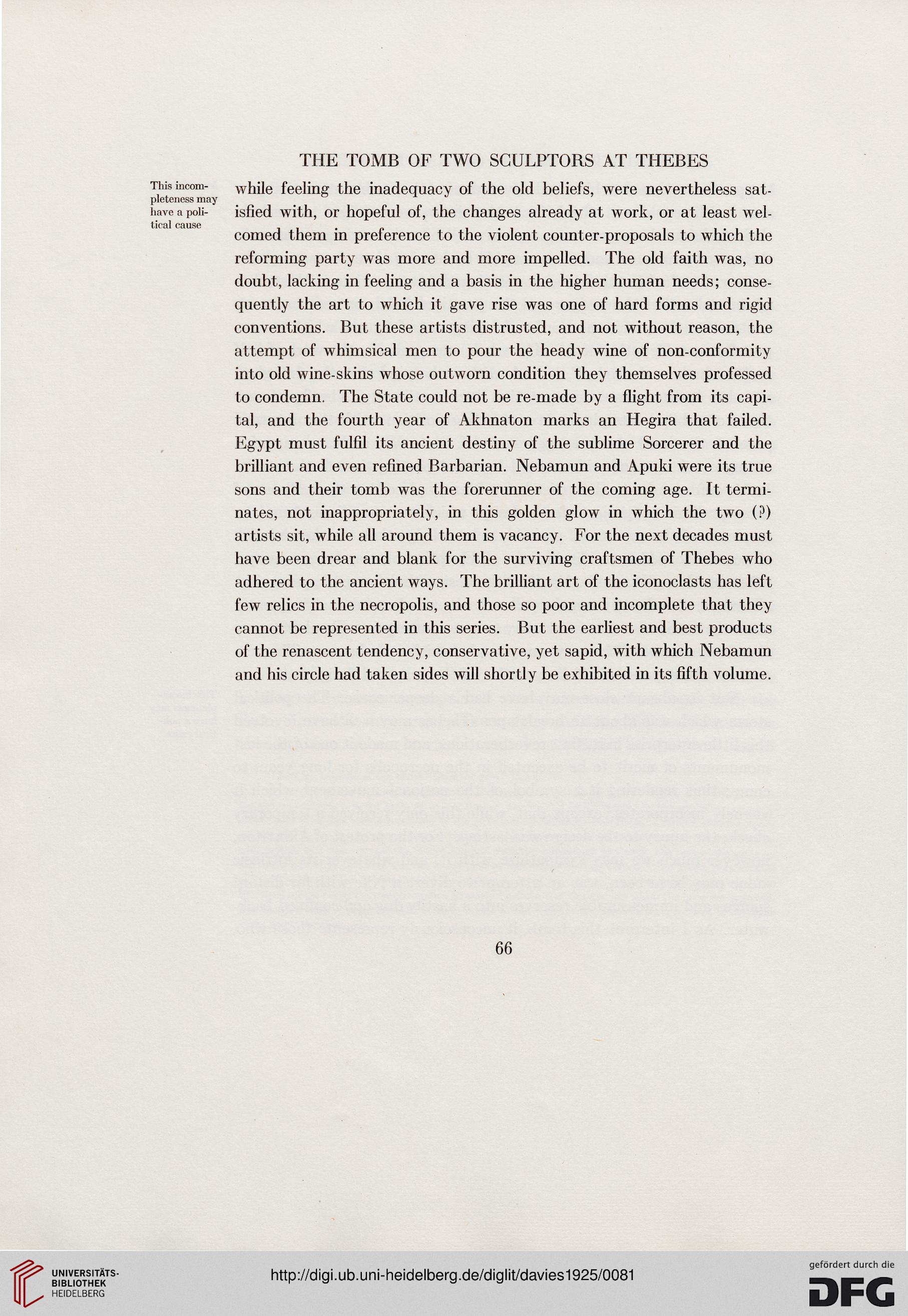This incom-
pleteness may
have a poli-
tical cause
THE TOMB OF TWO SCULPTORS AT THEBES
while feeling the inadequacy of the old beliefs, were nevertheless sat-
isfied with, or hopeful of, the changes already at work, or at least wel-
comed them in preference to the violent counter-proposals to which the
reforming party was more and more impelled. The old faith was, no
doubt, lacking in feeling and a basis in the higher human needs; conse-
quently the art to which it gave rise was one of hard forms and rigid
conventions. But these artists distrusted, and not without reason, the
attempt of whimsical men to pour the heady wine of non-conformity
into old wine-skins whose outworn condition they themselves professed
to condemn. The State could not be re-made by a flight from its capi-
tal, and the fourth year of Akhnaton marks an Hegira that failed.
Egypt must fulfil its ancient destiny of the sublime Sorcerer and the
brilliant and even refined Barbarian. Nebamun and Apuki were its true
sons and their tomb was the forerunner of the coming age. It termi-
nates, not inappropriately, in this golden glow in which the two (?)
artists sit, while all around them is vacancy. For the next decades must
have been drear and blank for the surviving craftsmen of Thebes who
adhered to the ancient ways. The brilliant art of the iconoclasts has left
few relics in the necropolis, and those so poor and incomplete that they
cannot be represented in this series. But the earliest and best products
of the renascent tendency, conservative, yet sapid, with which Nebamun
and his circle had taken sides will shortly be exhibited in its fifth volume.
66
pleteness may
have a poli-
tical cause
THE TOMB OF TWO SCULPTORS AT THEBES
while feeling the inadequacy of the old beliefs, were nevertheless sat-
isfied with, or hopeful of, the changes already at work, or at least wel-
comed them in preference to the violent counter-proposals to which the
reforming party was more and more impelled. The old faith was, no
doubt, lacking in feeling and a basis in the higher human needs; conse-
quently the art to which it gave rise was one of hard forms and rigid
conventions. But these artists distrusted, and not without reason, the
attempt of whimsical men to pour the heady wine of non-conformity
into old wine-skins whose outworn condition they themselves professed
to condemn. The State could not be re-made by a flight from its capi-
tal, and the fourth year of Akhnaton marks an Hegira that failed.
Egypt must fulfil its ancient destiny of the sublime Sorcerer and the
brilliant and even refined Barbarian. Nebamun and Apuki were its true
sons and their tomb was the forerunner of the coming age. It termi-
nates, not inappropriately, in this golden glow in which the two (?)
artists sit, while all around them is vacancy. For the next decades must
have been drear and blank for the surviving craftsmen of Thebes who
adhered to the ancient ways. The brilliant art of the iconoclasts has left
few relics in the necropolis, and those so poor and incomplete that they
cannot be represented in this series. But the earliest and best products
of the renascent tendency, conservative, yet sapid, with which Nebamun
and his circle had taken sides will shortly be exhibited in its fifth volume.
66





